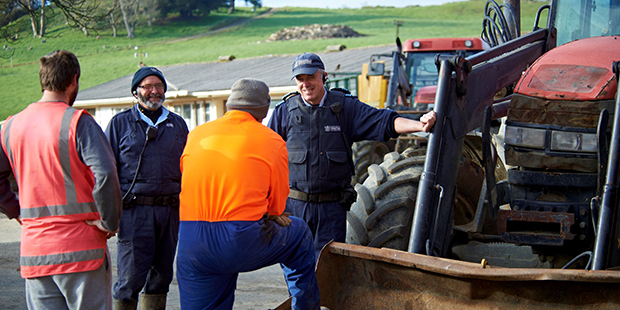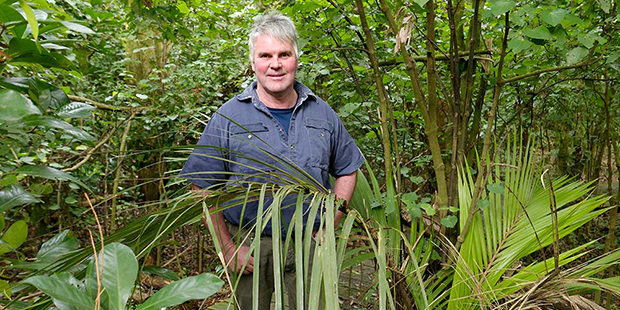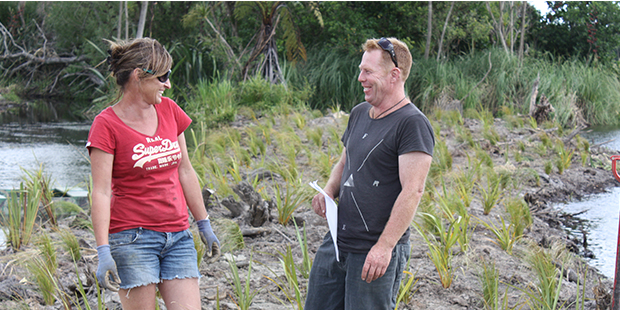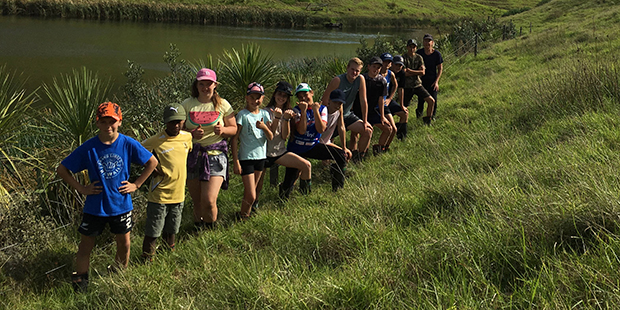From willows to whitebait
Restoring farm wetlands not only protects rivers, it brings back wildlife.


Stu and Kim Muir take the long-term view of working their dairy farm in the Waikato River delta – the tangle of waterways, islands and wetlands close to the river mouth on the west coast.
“In the farming community, we usually think everything that’s done on the farm has an impact three months, six months, or a year ahead. We’re thinking six or seven generations ahead,” Stu says.
His family have been farming in New Zealand since the 1850s. His great-great grandparents bought the present property in the 1890s; Stu and Kim’s children are the sixth generation to live and work on the land.
The farming continues – and so does the proof that dairy farming and conservation can go hand in glove, epitomised by the massive task of restoring a native wetland to its original condition (wetlands being one of the key weapons against run-off and leaching into rivers).
By 2011, the stream that used to flow through part of the property had become stagnant, blocked since the Awapuni Dam released silt that clogged the area’s natural streams in the 1920s. Stu brought in heavy machinery, removed dead willows and opened the waterways again.
“It had become degraded; it was a dirty, stagnant, horrible remnant of what it once was - full of willows and glyceria,” he says. “There was no current, every six feet there was a willow that had fallen, there was absolutely no tidal flow, it was dead - the fish couldn’t get up there, the whitebait couldn’t get up there. As soon as you take out obstructions, you create flow and create current you bring the life back.”

Photo / Supplied
Photo / Supplied
They have now retired 40ha of swamp from farming use and are restoring it to a native wetland, creating ponds with grasses, flaxes and native trees. With a grant from the Waikato River Authority (a joint iwi-Crown organisation that supports projects to clean up the river and tributaries), they have sown 40,000 plants in the wetlands and 8500 plants at a fenced-off sand dune lake on another family property.
They have introduced pest control over a 400ha area. As mustelids, possum and rat numbers dropped, birds and marine life returned. Kereru, tui, kaka and kotuku grace the home farm; bittern and fernbird are increasing at the swamp; the waters are home to whitebait, freshwater mussels, crayfish, eels and mullet.
Recently elected chair of the Endangered Species Foundation, Stu says conservation projects and profitable farming can co-exist: “It’s a really basic philosophy. If an area is marginal, we put it back to what it was, and if it’s productive – we make it 100 per cent productive. You can spend a lot of time trying to bring in land that is never going to be much good for anything – it’s better off being in a duckpond or a wetland or bush.
“This focuses you on the most productive parts of your farm, so you improve them.”
For example, the Muirs have introduced different species of plantains and chicory: “Those sorts of crops help get us through the dry summers and the extremes of weather that we’re getting more and more of.”
The diversity of plant species also helps with soil biology and attracting bees and pollinators.
Good relations with the wider community are an important aspect. School groups are regular visitors, learning about the area’s history as well as conservation.

Photo / Supplied
Photo / Supplied
“We host kids from South Auckland schools, beautiful, young talented kids, but half of them have never been in the bush or down to the river or experienced farming. It’s really nice to show them how this land’s been farmed for the last 80-100 years since it was first occupied. We’re just the next stage in the story. To see the response from the kids is just fantastic.”
The couple are building boardwalks through the wetlands and fundraising for a bridge connecting the restoration sites and enable easier access for the public.
“At the moment we can only really access the first part of the restoration on a little island. To go over to the main stream that we’ve cleared kilometres of, you really see the difference between a man-made stream and a natural environment.
“I’m just mad, I thought it’d be really cool to have a boardwalk through there. It’s just a matter of finding the time when we’re not doing a few thousand other things.” Like dairying.
On the present boardwalk, visitors walk above tall flax bordering the wetland and newly planted trees.
“In the next section, we’re taking it right down so you’ll be 2-3ft above the high tide, and that’ll give you the experience of what it’s like for us when we’re duck shooting or whitebaiting or just wandering around down there.”
Stu and Kim raise some funding for their projects from Te Papa Eco Cottage, an off-grid luxury bed-and-breakfast cottage above the wetland, but that’s on ice due to coronavirus restrictions.

Stu and Kim Muir. Photo / Supplied.
Stu and Kim Muir. Photo / Supplied.
The family look forward to extending its role as kaitiaki, guardians of the environment.
“Our kids are the sixth generation here. Our neighbours have been here for 25 generations so we’re just the new kids on the block. I’d like to think that in six generations the farm will still be here, but with more kaka and tui and kereru and native plant biodiversity - as well as being an incredibly profitable farm.”





